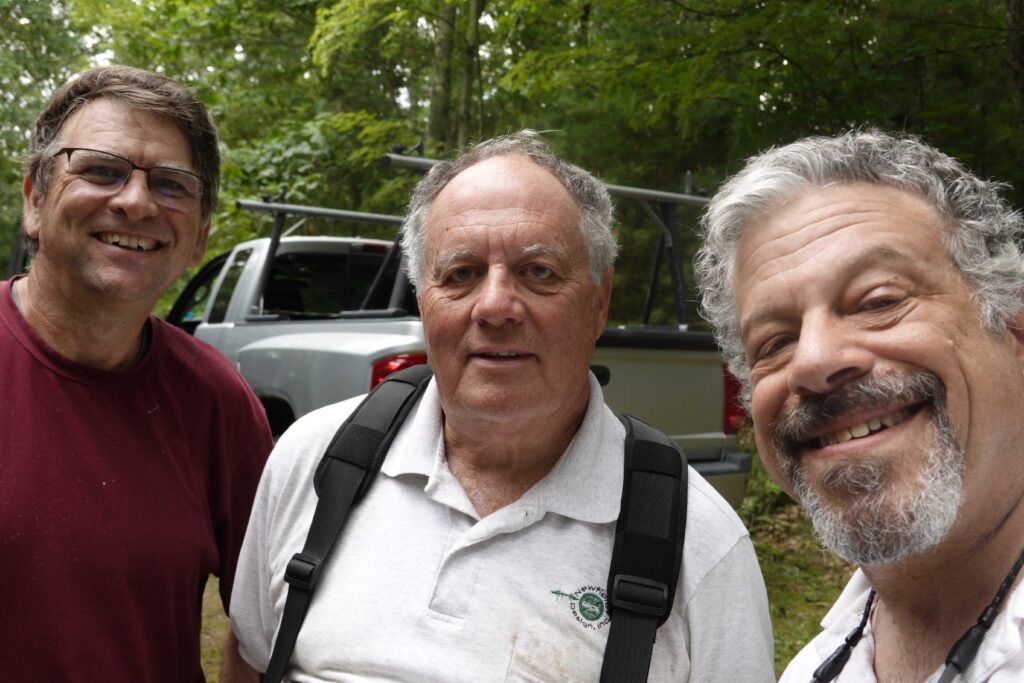Fixing my Intermittent 40-2CD
I put the Cushcraft 40-2CD 2-element 40 meter beam at the top of my tower in 1993. There are so many trees around the tower that we had to assemble the elements to the boom at the top of the tower. Actually it is at the top of the mast 10′ above the top of the tower! It lasted a long time before it started to be intermittent on receive.
John W2GD came up around 2016 and was able to climb the mast, get the beam in his hands, and rotate it so I could replace the feedline and feedpoint. It was less than a month later and the antenna started being intermittent on receive again. It mostly happened when the wind was blowing.
Just about the time John got the antenna reattached to the mast, I had noticed one of the loading coils looked mangled. It had a strange look like a bunch of birds had been pecking at the plastic. Since we had the antenna reinstalled, we didn’t pursue it.
The antenna kept getting worse and I would complain about it after every contest. In June 2020, Mark K1RX suggested that he had a fix that would solve the feedpoint problem and he was willing to help do the work. Mark does a lot of tower work for local hams and he is very good.
The feedpoint fix was to bypass the small through hole screws that Cushcraft used and replace it with some aluminum strap that went from the feedpoint, past the insulator, and out to the element. Mark came up with all the pieces from his junkbox. See photo below.
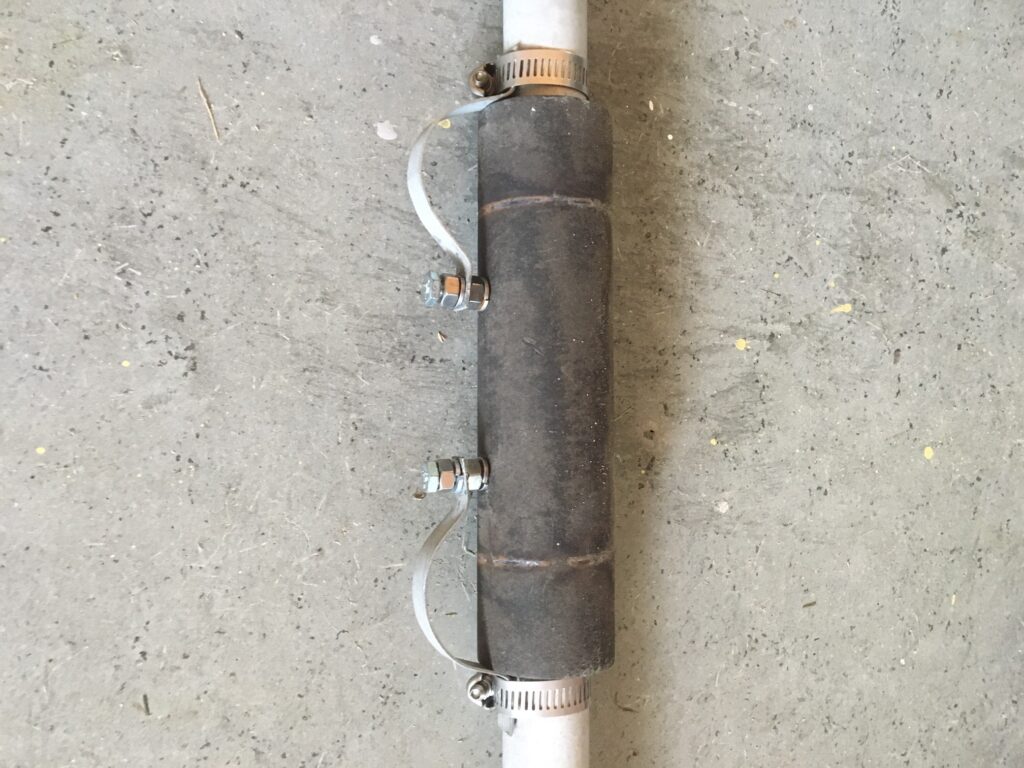
Mark climbed the mast and maneuvered the antenna so I could reach the feedpoint. I added the straps, reattached the coax, and then weatherproofed everything.
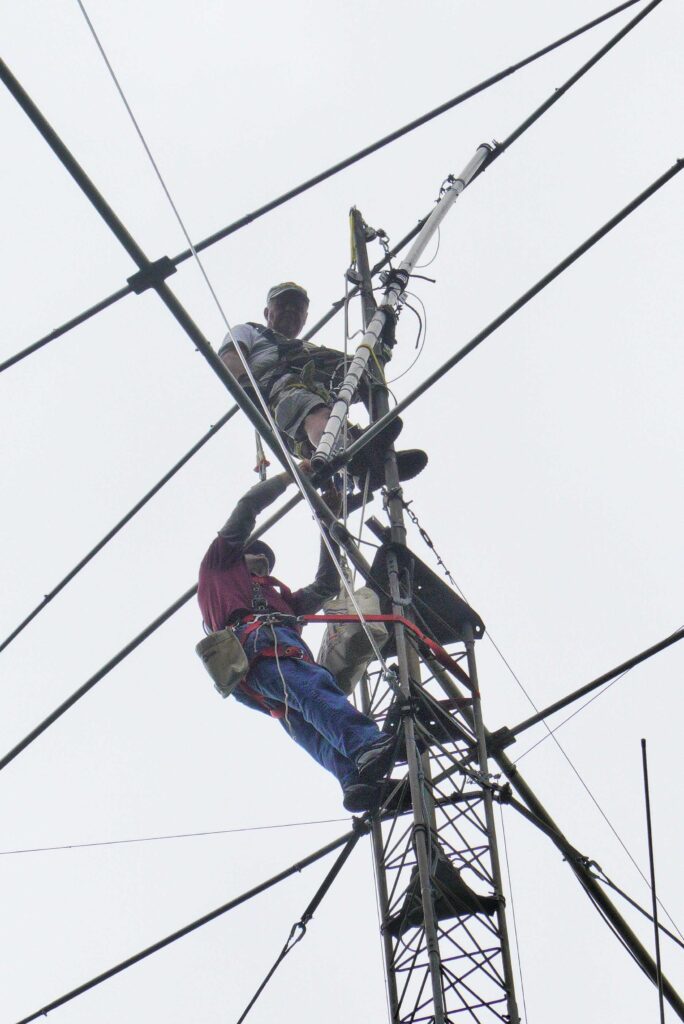
That mangled loading coil had also been bothering me for a few years. All attempts to get a photograph or better visual to diagnose were unhelpful. Since we had the antenna off the mast, Mark was able to get the coil to where I could reach it. Wow! Lighting damage. The coil had been vaporized on one end and the wire had unspooled. I had effectively been using a dipole in contests for 3+ years!
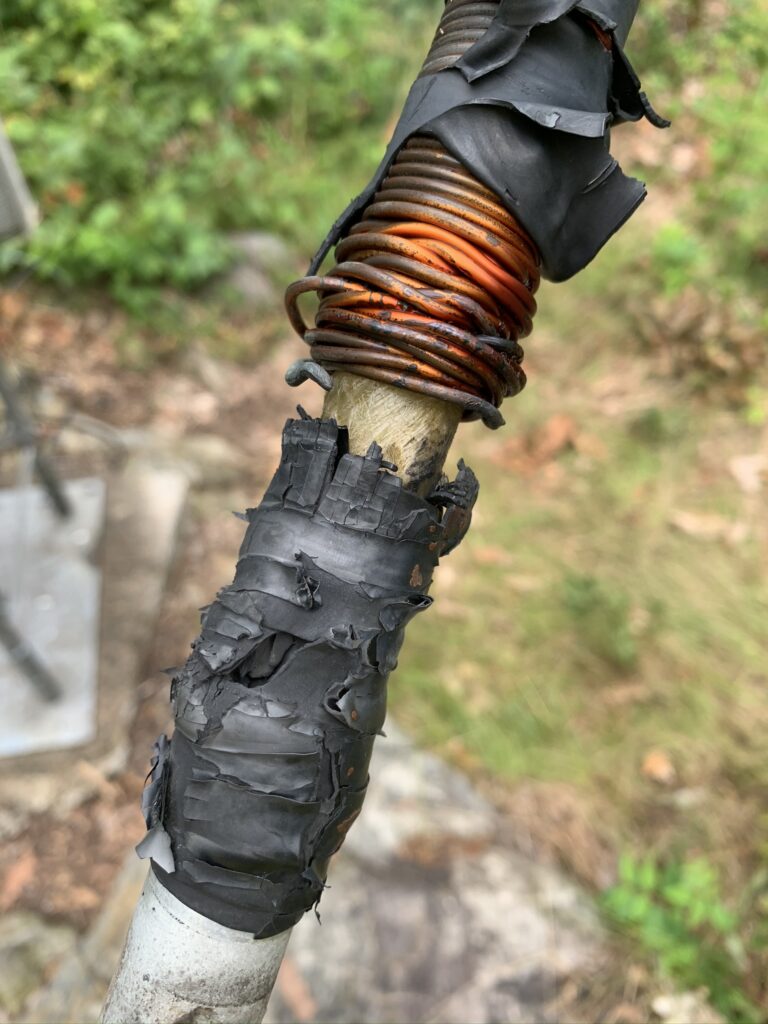
I have collected a few 40-2CD elements over the years just in case something like this happened. We were able to find a good one in the junk pile and replace the fried one. I was excited to have that mystery solved.
A recent wind storm had caused the truss wire on the Hygain 205-CA 5-element 20 meter beam to fail. Since we were up there, we took on the job to replace the truss on both sides with new stainless cable. A 205-CA is a big antenna and the truss wires go out near the end of the boom. Mark had to remove one of the elements to get the antenna to lean over far enough so I could reach it. It took all of Mark’s strength to wrangle the antenna.
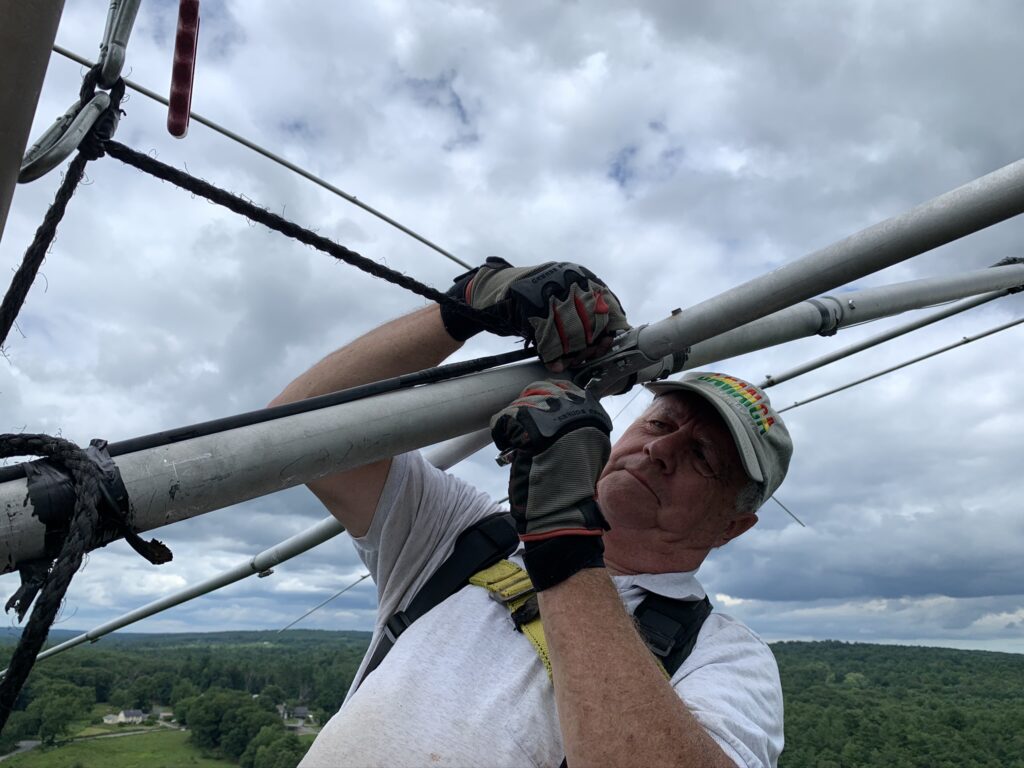
The end result has both good news and bad news. The 40 meter beam now feels and sounds like a beam again. I.e., it has front-to-back and I have had a bit more success on 40 in the past few contests. The SWR curve is back to looking like it did when I first put it up.
The bad news is that the antenna is still intermittent at times on receive. Signals will fall about 20-30db when the antenna is not working. Sometimes transmitting with 100W is not enough to clear it. But, so far, a quick blast with the amplifier on always brings the SWR back in line and the signals up.
I climbed the tower one evening with a long pole hoping I could bang on things and find where the intermittent might be. With the antenna analyzer connected, I could see the high SWR. Banging and prodding did no good. I could not quite reach the loading coils. Only when I violently pumped the antenna up and down would the SWR intermittently come down.
This 40-2CD has the W6NL mods so it has been extremely durable at resisting wind and weather. Given the lightning damage on the reflector trap, there is no telling where the failure point is on the driven element. As long as transmitting will clear it, I will live with it. But, sometime next summer it will be time to make another try at finding the problem or replacing the element.
Thanks to Jim K1IR for serving as ground crew during the climb.
